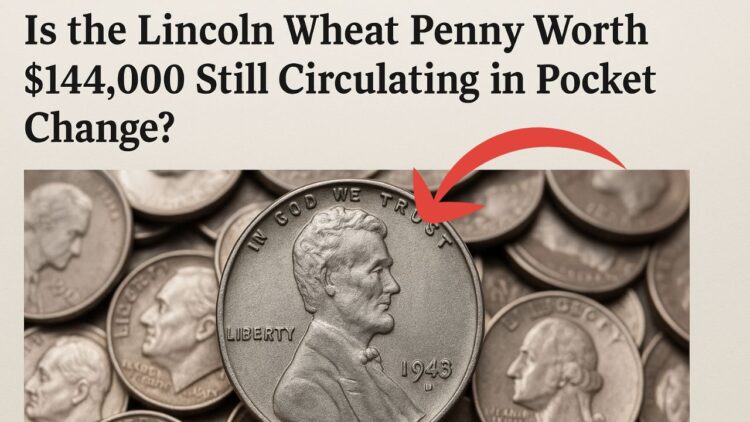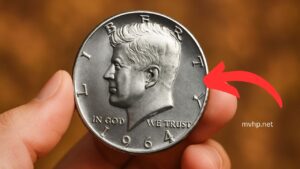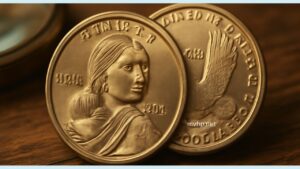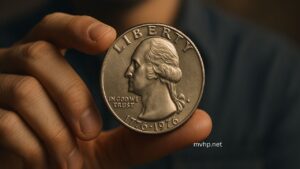The Lincoln Wheat Penny, minted from 1909 to 1958, holds a special place in American numismatic history. While most of these pennies are worth just one cent, a rare few have fetched astonishing sums at auctions.
Among them, the 1943 copper (bronze) Lincoln Wheat Penny stands out, with some specimens valued at over $1 million. But is this penny still circulating in pocket change today? Let’s delve into the details.
Understanding the 1943 Copper Lincoln Wheat Penny
Historical Context
In 1943, due to World War II and the need to conserve copper for ammunition, the U.S. Mint switched from the traditional bronze composition (95% copper, 5% tin and zinc) to zinc-coated steel for the production of pennies. This change resulted in the creation of the 1943 steel cent, which is magnetic and has a silvery appearance.
However, a small number of 1943 copper pennies were accidentally struck using leftover copper planchets from 1942. These error coins are extremely rare and highly valuable to collectors.
Rarity and Value
It’s estimated that only around 40 of these copper pennies were struck, with approximately 13 known to exist today. In 2010, one such coin sold for a record-breaking $1.7 million at auction, making it the most expensive Lincoln cent ever sold.
Identifying a Genuine 1943 Copper Penny
To determine if you have a genuine 1943 copper penny, consider the following characteristics:
| Feature | 1943 Copper Penny | 1943 Steel Penny |
|---|---|---|
| Composition | 95% copper | Zinc-coated steel |
| Weight | 3.11 grams | 2.72 grams |
| Magnetic | No | Yes |
| Appearance | Reddish-brown | Silvery |
Key Identification Tips:
- Magnet Test: Use a magnet to check the coin. If it sticks, it’s a steel cent.
- Weight Check: A copper penny weighs 3.11 grams, while a steel penny weighs 2.72 grams.
- Visual Inspection: The copper penny has a reddish-brown hue, whereas the steel penny appears silvery.
Are These Pennies Still in Circulation?
Given their rarity and value, it’s highly unlikely to find a genuine 1943 copper penny in everyday pocket change. Most of these coins are securely held in private collections or museums.
However, they occasionally surface in auctions, often fetching prices between $100,000 and $1.7 million, depending on their condition and provenance.
Other Valuable Lincoln Wheat Pennies
While the 1943 copper penny is the most famous, other Lincoln Wheat Pennies are also highly sought after:
- 1909-S VDB: Minted in San Francisco, this penny features the initials of its designer, Victor David Brenner, on the reverse. Due to its low mintage and the removal of the initials shortly after production, it’s considered one of the rarest and most valuable pennies.
- 1955 Doubled Die Obverse: A minting error where the date and inscriptions are doubled, making it a prized possession among collectors.
- 1944 Steel Penny: Another error coin where a few steel pennies were struck in 1944, making them highly valuable.
The idea of finding a 1943 copper Lincoln Wheat Penny worth $144,000 or more in your pocket change is a tantalizing thought. While it’s exceedingly rare, the possibility adds an element of excitement to coin collecting. If you come across a 1943 penny, it’s worth taking the time to verify its authenticity. Who knows? You might just be holding a piece of history in your hand.
FAQs
What makes the 1943 copper Lincoln Wheat Penny so valuable?
Its value stems from its rarity; only about 40 were struck due to a minting error, and only a few are known to exist today.
How can I tell if I have a genuine 1943 copper penny?
Perform a magnet test (it shouldn’t stick), weigh the coin (it should be 3.11 grams), and inspect its color (it should have a reddish-brown hue).
Are there other valuable Lincoln Wheat Pennies?
Yes, coins like the 1909-S VDB, 1955 Doubled Die Obverse, and 1944 Steel Penny are also highly sought after by collectors.




